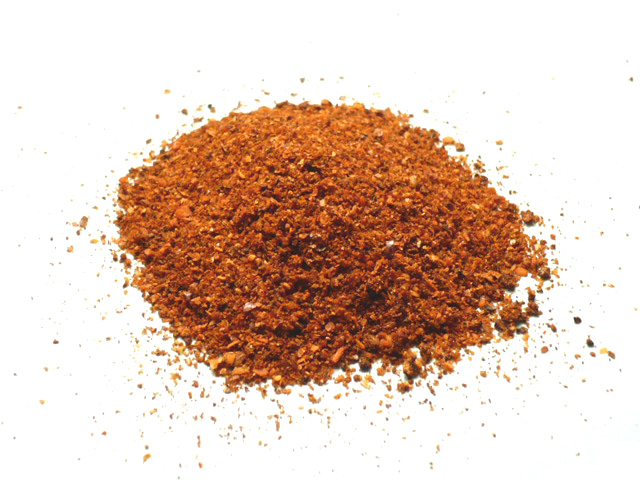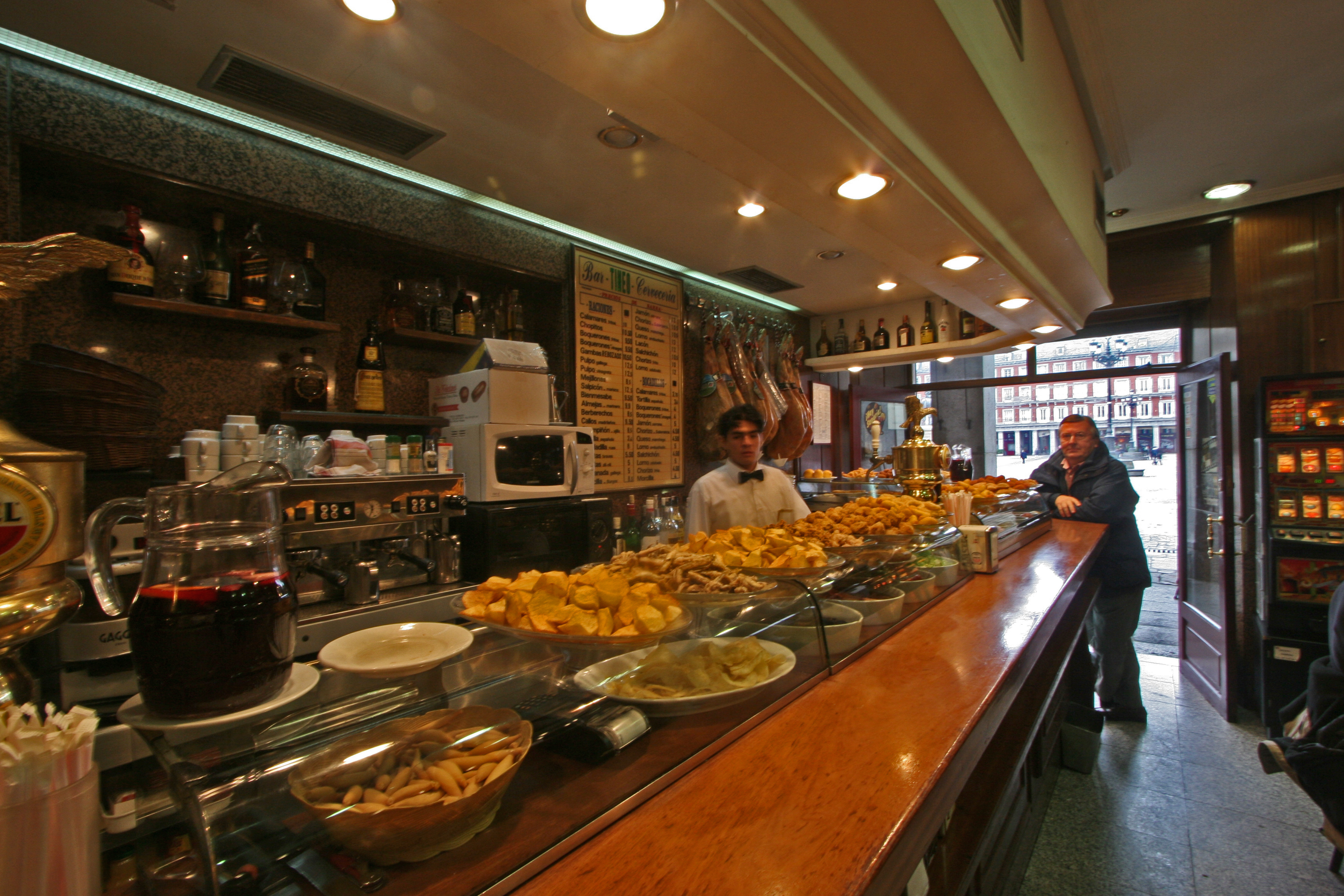|
Padrón Peppers
Padrón peppers, also called Herbón peppers, are a landrace variety of peppers (''Capsicum annuum'') from the municipality of Padrón in northwestern Spain. Characteristics Padrón peppers are small, about 2 inches (5 cm) long and have an elongated shape. They are often picked, sold and eaten unripe, when they are still green. The taste is mild, but some exemplars can be quite hot. This property has given rise to the popular Galician aphorism "''Os pementos de Padrón, uns pican e outros non''" ("Padrón peppers, some are hot, some are not"). Drought-stressed plants tend to produce hotter peppers. Like several other peppers, Padrón peppers become spicier as they mature. Their ripe colour is red. Cultivation The species Capsicum annuum is native to southern North America, the Caribbean, and northern South America where it was domesticated. The Padrón pepper variety originates from the municipality of Padrón in the province of A Coruña, Galicia, northwestern Spain. ... [...More Info...] [...Related Items...] OR: [Wikipedia] [Google] [Baidu] |
Capsicum Annuum
''Capsicum annuum'' is a species of the plant genus ''Capsicum'' native to southern North America, the Caribbean, and northern South America. This species is the most common and extensively cultivated of the five domesticated capsicums. The species encompasses a wide variety of shapes and sizes of peppers, including sweet bell peppers and some chili pepper varieties such as jalapeños, New Mexico chile, and cayenne peppers. Cultivars descended from the wild American bird pepper are still found in warmer regions of the Americas. In the past, some woody forms of this species have been called '' C. frutescens'', but the features that were used to distinguish those forms appear in many populations of ''C. annuum'' and are not consistently recognizable features in ''C. frutescens'' species. Characteristics Although the species name ''annuum'' means 'annual' (from the Latin ''annus'' "year"), the plant is not an annual but is frost tender. In the absence of winter frosts it can survive ... [...More Info...] [...Related Items...] OR: [Wikipedia] [Google] [Baidu] |
Protected Designation Of Origin
The protected designation of origin (PDO) is a type of geographical indication of the European Union and the United Kingdom aimed at preserving the designations of origin of food-related products. The designation was created in 1992 and its main purpose is to designate products that have been produced, processed and developed in a specific geographical area, using the recognized know-how of local producers and ingredients from the region concerned. The list below also shows other geographical indications. Features The characteristics of the products protected are essentially linked to their terroir. The European or UK PDO logo, of which the use is compulsory, documents this link. European Regulation 510/2006 of 20 March 2006 acknowledges a priority to establish a community protection system that ensures equal conditions of competition between producers. This European Regulation is intended to guarantee the reputation of regional products, adapt existing national protections t ... [...More Info...] [...Related Items...] OR: [Wikipedia] [Google] [Baidu] |
Chili Peppers
Chili peppers (also chile, chile pepper, chilli pepper, or chilli), from Nahuatl '' chīlli'' (), are varieties of the berry-fruit of plants from the genus ''Capsicum'', which are members of the nightshade family Solanaceae, cultivated for their pungency. Chili peppers are widely used in many cuisines as a spice to add "heat" to dishes. Capsaicin and related compounds known as capsaicinoids are the substances giving chili peppers their intensity when ingested or applied topically. While ''chili peppers'' are (to varying degrees) pungent or "spicy", there are other varieties of capsicum such as bell peppers (UK: peppers) which generally provide additional sweetness and flavor to a meal rather than “heat.” Chili peppers are believed to have originated somewhere in Central or South America. and were first cultivated in Mexico. After the Columbian Exchange, many cultivars of chili pepper spread around the world, used for both food and traditional medicine. This led to a ... [...More Info...] [...Related Items...] OR: [Wikipedia] [Google] [Baidu] |
Capsicum Cultivars
This is a list of ''Capsicum'' cultivars belonging to the five major species of cultivated peppers (genus ''Capsicum''): '' C. annuum'', '' C. chinense'', '' C. baccatum'', '' C. frutescens'', and '' C. pubescens''. Due to the large and changing number of cultivars, and the variation of cultivar namings in different regions, this list only gives a few examples of the estimated 50,000 pepper varieties that exist. ''Capsicum'' species There are perhaps fifty thousand ''Capsicum'' cultivars grown worldwide. The USDA-ARS GRIN seed collection contains 6,200 ''Capsicum'' accessions alone, including 4,000 ''Capsicum annuum'' accessions. The other ''Capsicum'' species in the USDA germplasm repository include: '' C. chinense, C. baccatum, C. frutescens, C. pubescens, C. cardenasii, C. chacoense, C. flexuosum, C. eximium, C. rhomboideum, C. galapagoense,'' and ''C. tovarii.'' There are five major species of cultivated ''Capsicum'', '' C. annuum, C. chinense, C. baccatum, C. f ... [...More Info...] [...Related Items...] OR: [Wikipedia] [Google] [Baidu] |
Shishito
is a sometimes hot East Asian pepper variety of the species ''Capsicum annuum''., abstract quote: " 'Shishito' (Capsicum annuum L.) is a group of sweet pepper cultivars. Fruits are small, green and non-pungent, but pungent fruits sometimes occur.." Characteristics The pepper is small and finger-long, slender, and thin-walled. Although it turns from green to red upon ripening, it is usually harvested while green. The name refers to the fact that the tip of the looks like the head; in Japanese it is often abbreviated as ''shishitō''. About one out of every ten to twenty peppers is spicy. The occurrence of pungent fruit is induced by such factors as exposure to sunlight, and other environmental stresses. The prefectural agricultural testing center at Kishigawa, Wakayama stated in 2005 that capsaicin forms more easily in hot and dry conditions in the summer, and even experts may not be able to distinguish relative hotness on the same plant., also posted by blo新建設 まめ� ... [...More Info...] [...Related Items...] OR: [Wikipedia] [Google] [Baidu] |
List Of Capsicum Cultivars
This is a list of ''Capsicum'' cultivars belonging to the five major species of cultivated peppers (genus ''Capsicum''): '' C. annuum'', '' C. chinense'', '' C. baccatum'', '' C. frutescens'', and '' C. pubescens''. Due to the large and changing number of cultivars, and the variation of cultivar namings in different regions, this list only gives a few examples of the estimated 50,000 pepper varieties that exist. ''Capsicum'' species There are perhaps fifty thousand ''Capsicum'' cultivars grown worldwide. The USDA-ARS GRIN seed collection contains 6,200 ''Capsicum'' accessions alone, including 4,000 ''Capsicum annuum'' accessions. The other ''Capsicum'' species in the USDA germplasm repository include: '' C. chinense, C. baccatum, C. frutescens, C. pubescens, C. cardenasii, C. chacoense, C. flexuosum, C. eximium, C. rhomboideum, C. galapagoense,'' and ''C. tovarii.'' There are five major species of cultivated ''Capsicum'', '' C. annuum, C. chinense, C. baccatum, C. f ... [...More Info...] [...Related Items...] OR: [Wikipedia] [Google] [Baidu] |
Tapas
A tapa () is an appetizer or snack in Spanish cuisine. Tapas can be combined to make a full meal, and can be cold (such as mixed olives and cheese) or hot (such as ''chopitos'', which are battered, fried baby squid, or patatas bravas). In some bars and restaurants in Spain and across the globe, tapas have evolved into a very sophisticated cuisine. In some Central American countries, such snacks are known as ''bocas''. In parts of Mexico, similar dishes are called ''botanas''. History The word "tapas" is derived from the Spanish verb ''tapar'', "to cover", a cognate of the English ''top''. In pre-19th-century Spain tapas were served by ''posadas'', ''albergues'' or ''bodegas'', offering meals and rooms for travellers. Since few innkeepers could write and few travellers read, inns offered their guests a sample of the dishes available, on a "tapa" (the word for pot cover in Spanish). According to ''Joy of Cooking'', the original tapas were thin slices of bread or meat wh ... [...More Info...] [...Related Items...] OR: [Wikipedia] [Google] [Baidu] |
La Voz De Galicia
''La Voz de Galicia'' ( en, The Voice of Galicia) is a Spanish daily newspaper owned by the Corporación Voz de Galicia. ''La Voz'' is highest circulation newspaper in Galicia and the eighth-highest circulation general-interest daily newspaper in Spain. It is written primarily in Spanish with Galician used in the cultural and opinion sections. The newspaper was founded in 1882 by Juan Fernández Latorre and is published in A Coruña, Galicia. The paper has a digital version available in Spanish and Galician, however the Galician version is an automatic translation, the original articles are written exclusively in Spanish. History Juan Fernández Latorre founded ''La Voz de Galicia'' in 1882 as a republican, progressive newspaper. Consolidated in the republican era with a circulation of more than 20.000 daily copies, it was not until the 1960s, when Santiago Rey Fernandez-Latorre, the founder's grandson took over as manager, that ''La Voz'' began its expansion. In May 2010, ... [...More Info...] [...Related Items...] OR: [Wikipedia] [Google] [Baidu] |
Olive Oil
Olive oil is a liquid fat obtained from olives (the fruit of ''Olea europaea''; family Oleaceae), a traditional tree crop of the Mediterranean Basin, produced by pressing whole olives and extracting the oil. It is commonly used in cooking: for frying foods or as a salad dressing. It can be found in some cosmetics, pharmaceuticals, soaps, and fuels for traditional oil lamps. It also has additional uses in some religions. The olive is one of three core food plants in Mediterranean cuisine; the other two are wheat and grapes. Olive trees have been grown around the Mediterranean since the 8th millennium BC. In 2019–2020, world production of olive oil was . Spain was the largest producer followed by Italy, Tunisia, Greece, Turkey and Morocco. San Marino has by far the largest per capita consumption of olive oil worldwide. The composition of olive oil varies with the cultivar, altitude, time of harvest, and extraction process. It consists mainly of oleic acid (up to 83%), with ... [...More Info...] [...Related Items...] OR: [Wikipedia] [Google] [Baidu] |
European Union
The European Union (EU) is a supranational political and economic union of member states that are located primarily in Europe. The union has a total area of and an estimated total population of about 447million. The EU has often been described as a '' sui generis'' political entity (without precedent or comparison) combining the characteristics of both a federation and a confederation. Containing 5.8per cent of the world population in 2020, the EU generated a nominal gross domestic product (GDP) of around trillion in 2021, constituting approximately 18per cent of global nominal GDP. Additionally, all EU states but Bulgaria have a very high Human Development Index according to the United Nations Development Programme. Its cornerstone, the Customs Union, paved the way to establishing an internal single market based on standardised legal framework and legislation that applies in all member states in those matters, and only those matters, where the states have agreed to act ... [...More Info...] [...Related Items...] OR: [Wikipedia] [Google] [Baidu] |
Landrace
A landrace is a domesticated, locally adapted, often traditional variety of a species of animal or plant that has developed over time, through adaptation to its natural and cultural environment of agriculture and pastoralism, and due to isolation from other populations of the species. Landraces are distinct from cultivars and from standard breeds. A significant proportion of farmers around the world grow landrace crops., and most plant landraces are associated with traditional agricultural systems. Landraces of many crops have probably been grown for millennia. Increasing reliance upon modern plant cultivars that are bred to be uniform has led to a reduction in biodiversity, because most of the genetic diversity of domesticated plant species lies in landraces and other traditionally used varieties. Some farmers using scientifically improved varieties also continue to raise landraces for agronomic reasons that include: better adaptation to the local environment, lower fertilizer r ... [...More Info...] [...Related Items...] OR: [Wikipedia] [Google] [Baidu] |







